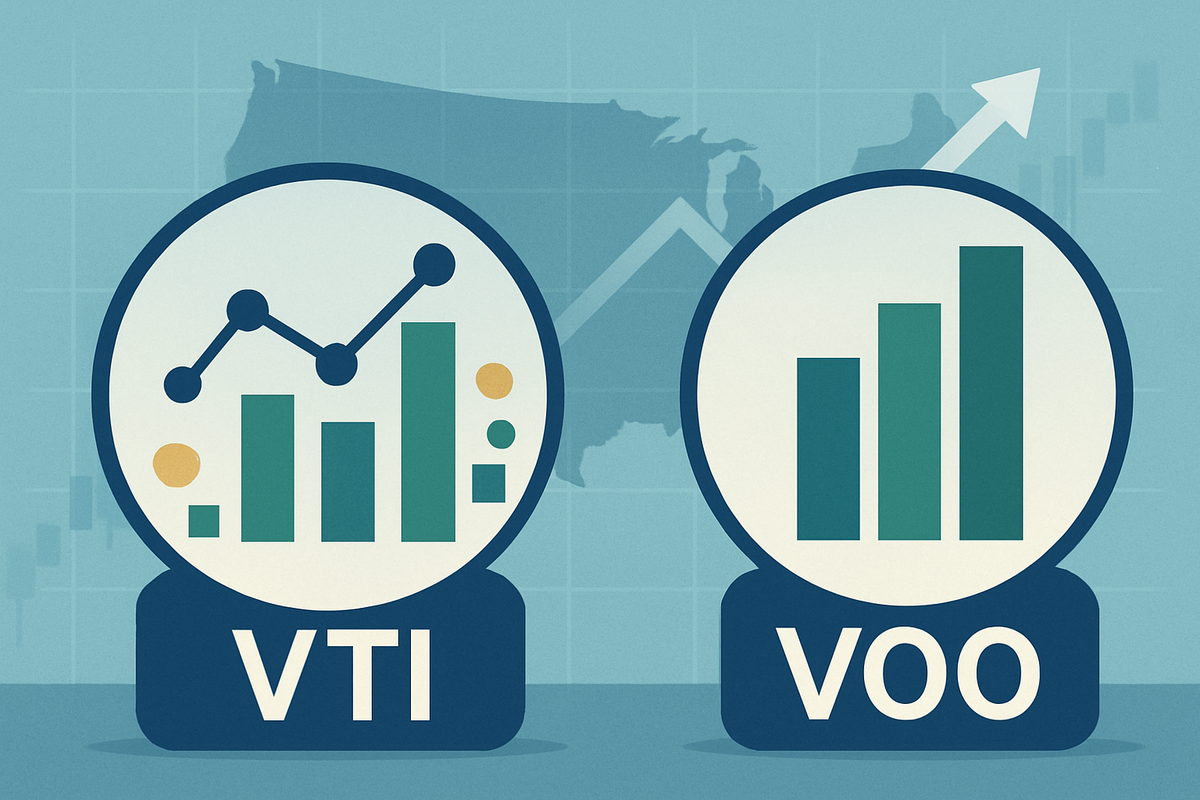
In the realm of passive investing, two titans from Vanguard often stand at the forefront of discussions for long-term U.S. equity exposure: the Vanguard S&P 500 ETF (NYSEARCA: VOO) and the Vanguard Total Stock Market ETF (NYSEARCA: VTI). Both Exchange Traded Funds (ETFs) offer investors a low-cost, diversified pathway into the American stock market, yet they diverge in their underlying philosophy and market coverage. The ongoing debate among investors centers on which of these behemoths presents a smarter long-term investment, a choice that hinges on subtle but significant differences in diversification and market focus.
As of October 6, 2025, the financial landscape continues to favor passive, low-cost investment vehicles, making the comparison between VOO and VTI more pertinent than ever. For investors looking to set a foundational U.S. equity holding, understanding the nuances of these two funds is crucial. While both have delivered robust returns over the years, their distinct approaches to market capture mean that an investor’s preference for broad market representation versus a large-cap focus could subtly shape their portfolio's trajectory over decades.
Unpacking the Titans: A Deep Dive into VOO and VTI
The core difference between VOO and VTI lies in their benchmark indexes and, consequently, their level of market capitalization exposure. The Vanguard S&P 500 ETF (VOO) is designed to track the performance of the S&P 500 Index. This index comprises 500 of the largest publicly traded U.S. companies by market capitalization, effectively representing approximately 80% of the total value of the U.S. stock market. VOO employs a full replication strategy, holding substantially all the stocks in the S&P 500 in proportions similar to their index weighting, providing concentrated exposure to established, highly liquid large-cap firms.
In contrast, the Vanguard Total Stock Market ETF (VTI) aims to replicate the performance of the CRSP US Total Market Index. This index is far broader, encompassing nearly 100% of the investable U.S. stock market. VTI's portfolio includes a vast array of companies, from mega-cap giants to mid-, small-, and even micro-cap stocks, totaling over 3,600 individual holdings. While still heavily weighted towards large-cap stocks due to market capitalization indexing, VTI offers a more comprehensive slice of the American corporate landscape, including exposure to emerging growth companies beyond the S&P 500. Both ETFs boast an exceptionally low expense ratio of 0.03%, a testament to Vanguard's commitment to cost-efficient investing, making them attractive options for long-term holders.
Historically, both VOO and VTI have delivered remarkably similar performance over the long term, largely because the S&P 500 companies within VOO constitute a significant portion (around 80%) of VTI's total market exposure. Over the past decade, VOO has often shown a slight edge in annualized returns, such as 15.12% for VOO compared to 14.54% for VTI (as of early October 2025), a reflection of the strong performance of large-cap growth stocks in recent years. However, this trend is not immutable; market cycles can shift, and small- and mid-cap stocks, which VTI includes more of, have historically outperformed large-caps over very long periods. VTI typically exhibits slightly higher volatility due to the inclusion of these smaller companies, which can experience more pronounced price swings than their large-cap counterparts. Both funds are managed by Vanguard, a pioneer in low-cost index investing, and have been available for many years, establishing long track records of consistent performance.
Market Implications: Who Wins, Who Loses?
When comparing VOO and VTI, it's not about specific public companies "winning" or "losing" in the traditional sense, as both are diversified funds. Instead, the choice between them dictates which segments of the market an investor is more heavily exposed to, thereby influencing which types of companies might contribute more significantly to returns based on prevailing market conditions.
Choosing VOO means an investor is primarily betting on the continued dominance and stability of large-cap U.S. companies. Companies like Apple (NASDAQ: AAPL), Microsoft (NASDAQ: MSFT), Amazon (NASDAQ: AMZN), and Nvidia (NASDAQ: NVDA), which are typically top holdings in the S&P 500, would have a disproportionately larger impact on VOO's performance. If large-cap technology and established blue-chip companies continue their strong growth trajectory, VOO investors stand to benefit significantly. Conversely, if these mega-caps face headwinds or a market rotation favors smaller, more agile companies, VOO's performance could lag.
On the other hand, VTI's broader market exposure means that its performance is influenced by the entire spectrum of U.S. companies. While large-caps still dominate its weighting, VTI also includes thousands of mid- and small-cap companies. If these smaller companies experience a period of robust growth, perhaps driven by economic recovery, innovation in niche sectors, or a shift in investor sentiment towards value or emerging growth, VTI could potentially outperform VOO. For instance, companies like those found in the Russell 2000 index, which are not in the S&P 500 but are part of VTI, could drive returns. However, this broader exposure also means VTI is more susceptible to the volatility inherent in smaller companies, which can be more sensitive to economic downturns or specific industry challenges.
Ultimately, the "winners" in an VOO-dominated portfolio are the established market leaders and blue-chip stocks, while the "winners" in a VTI-dominated portfolio could be a wider array of companies across all market capitalizations, particularly during periods when small and mid-cap stocks outperform. For companies that are not yet large enough to be included in the S&P 500, VTI offers a pathway for investors to participate in their growth story, whereas VOO would only include them if they grow to become S&P 500 constituents.
Wider Significance: Investment Philosophy and Portfolio Construction
The ongoing discussion between VOO and VTI extends beyond mere performance numbers; it touches upon fundamental investment philosophies and portfolio construction strategies. Both ETFs embody the principles of passive investing and market-cap weighting, which have gained immense popularity over the last few decades due to their low costs, tax efficiency, and historical outperformance compared to many actively managed funds. The choice between them often reflects an investor's preferred degree of market representation within their U.S. equity allocation.
This debate fits squarely into the broader industry trend towards index investing as a default strategy for many investors. The rise of Vanguard and other low-cost providers has democratized access to diversified market exposure, making it easier for individual investors to build robust portfolios. VOO represents a focus on the most dominant and influential segment of the U.S. economy, often considered a proxy for the entire market due to the sheer size of its constituents. VTI, however, takes this a step further, offering the ultimate in U.S. market diversification, capturing the entire investable universe from the largest to the smallest public companies. This comprehensive approach aligns with the belief that attempting to pick winning market segments (like large-cap vs. small-cap) is difficult, and therefore, owning the entire market is the most efficient long-term strategy.
The potential ripple effects of choosing one over the other are primarily on an individual investor's portfolio structure. If an investor opts for VOO, they might feel the need to supplement their portfolio with separate mid-cap (e.g., Vanguard Mid-Cap ETF (NYSEARCA: VO)) or small-cap (e.g., Vanguard Small-Cap ETF (NYSEARCA: VB)) funds to achieve broader market exposure. This multi-fund approach, while effective, introduces slightly more complexity in rebalancing and management. In contrast, VTI can serve as a complete, single-fund solution for U.S. equity exposure, simplifying portfolio construction and maintenance. There are no direct regulatory or policy implications tied to choosing one over the other, as both are standard, regulated investment products. Historically, the long-term performance of the S&P 500 and the total U.S. stock market has been closely correlated, reinforcing the idea that for many, the practical difference in returns might be marginal, but the philosophical difference in market capture remains.
What Comes Next: Navigating Future Market Dynamics
Looking ahead, the choice between VOO and VTI will continue to be influenced by prevailing market dynamics and investor sentiment. In the short term, if the current trend of large-cap outperformance persists, driven by technological innovation and the stability of established giants, VOO may continue to show a slight edge. Conversely, a shift in the economic cycle, perhaps favoring value stocks or smaller companies poised for rapid growth during a recovery, could see VTI's broader exposure become more advantageous.
For long-term investors, both ETFs are expected to remain excellent core holdings, providing consistent exposure to the U.S. equity market. Strategic pivots might involve adjusting allocations to international stocks or bonds, rather than constantly switching between VOO and VTI. The primary challenge for investors will be to maintain discipline and avoid performance chasing, as the marginal differences in returns between these two highly correlated funds are often not significant enough to warrant frequent adjustments.
Market opportunities may emerge for VTI if small and mid-cap companies experience a prolonged period of outperformance, offering diversification benefits beyond the S&P 500. For VOO, the opportunity lies in the continued stability and earnings power of the largest U.S. corporations, which often have global reach and robust balance sheets. Potential scenarios and outcomes suggest that both funds will continue to track the U.S. market efficiently. The decision largely boils down to an investor's comfort with the scope of their U.S. equity exposure: a focused bet on the largest 500 companies or a comprehensive stake in the entire U.S. market.
A Comprehensive Wrap-Up: Making the Long-Term Choice
In summary, the comparison between the Vanguard S&P 500 ETF (VOO) and the Vanguard Total Stock Market ETF (VTI) highlights two exceptionally low-cost and efficient ways to gain exposure to the U.S. stock market. The key takeaway is that while VOO offers concentrated exposure to the 500 largest U.S. companies, VTI provides broader diversification across the entire spectrum of U.S. market capitalizations, including mid-, small-, and micro-cap stocks. Both have delivered similar long-term returns, with VOO showing a slight lead in recent years due to strong large-cap performance, but VTI offering potentially higher growth from smaller companies during different market cycles, albeit with slightly higher volatility.
Moving forward, the market is expected to continue rewarding diversified, low-cost index investing. For investors prioritizing simplicity and comprehensive U.S. market exposure in a single fund, VTI is often the preferred choice. It removes the need to actively manage separate small or mid-cap allocations. For those who prefer a focus on the most established and dominant U.S. companies and are comfortable adding other funds for broader market capitalization exposure, VOO remains an outstanding option.
The lasting impact of either choice is likely to be positive for long-term investors, given their low expense ratios and broad market exposure. Investors should watch for shifts in market leadership between large-cap and small/mid-cap segments, as these could influence the marginal performance differences between VOO and VTI. Ultimately, both ETFs are stellar foundational investments for a U.S. equity portfolio, and the "smarter" choice often comes down to an individual investor's preference for either maximum simplicity and breadth (VTI) or a slightly more concentrated large-cap focus (VOO) within their overall investment strategy.
This content is intended for informational purposes only and is not financial advice.





